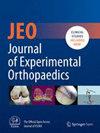Kinematic alignment (KA) in total knee arthroplasty (TKA) is by definition a pure femoral resurfacing procedure aiming to restore the individual prearthritic anatomy. However, when a 2 mm compensation is systematically used on the worn side, the variability in cartilage thickness in the unworn compartment might alter the accuracy of the technique. This study aimed to validate two intraoperative femoral cartilage thickness measurement techniques by comparing them to the photographic method, which measures cartilage thickness through pixel analysis of bone-cut images. The study hypothesized that the two intraoperative methods are comparable and similarly accurate within 0.5 mm of the photographic method.
Seventy cartilage thickness measurements from seventy patients with end-stage knee osteoarthritis were prospectively collected. Two intraoperative techniques were evaluated: the electrocautery tip method (Method A) and the ruler method (Method B), performed before and after distal femoral bone resections, respectively. The postoperative photographic analysis (Method C) served as the reference method. Measurements were rounded to the nearest 0.5 mm for consistency. Data were analyzed using Kruskal–Wallis test, Wilcoxon rank-sum tests, Spearman's rank correlation, percentage of agreement and intraclass correlation coefficients (ICCs).
No significant differences were observed between Method A and Method B in measuring femoral cartilage thickness. Agreement with Method C was 100% for Method B and 85% for Method A. In the 15% of discordant cases, Method A overestimated the measurements by one category of 0.5 mm compared to Method C. Correlation coefficients between the methods were high (ρ = 0.88−1.0). Intra- and interobserver reliability was high for all methods (ICCs 0.91–0.95).
Both intraoperative methods are reliable and comparable to the photographic method when rounded to the closest 0.5 mm, with no significant differences among them. The electrocautery method has the added advantage of measuring cartilage thickness before bone cuts are performed.
Level IV.



